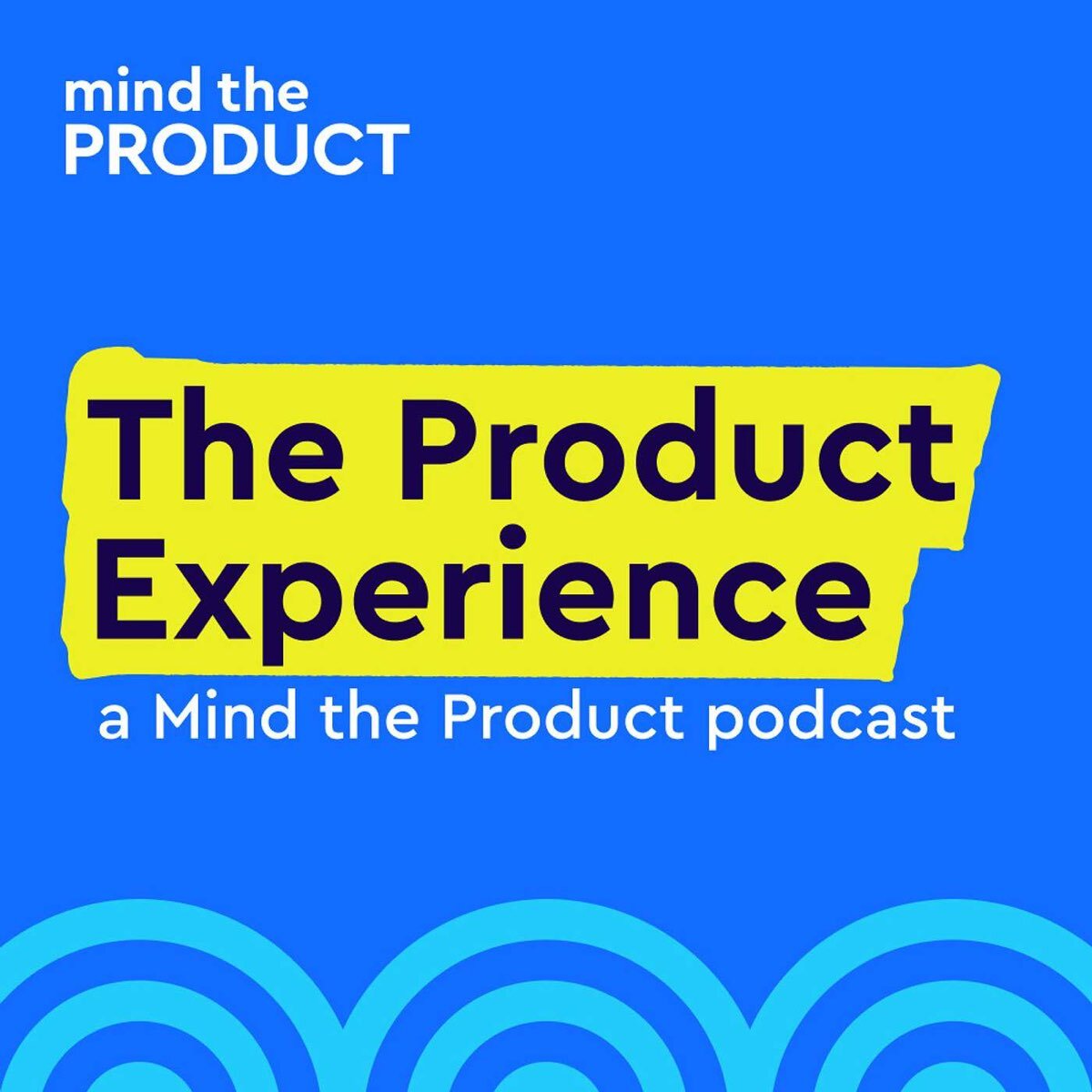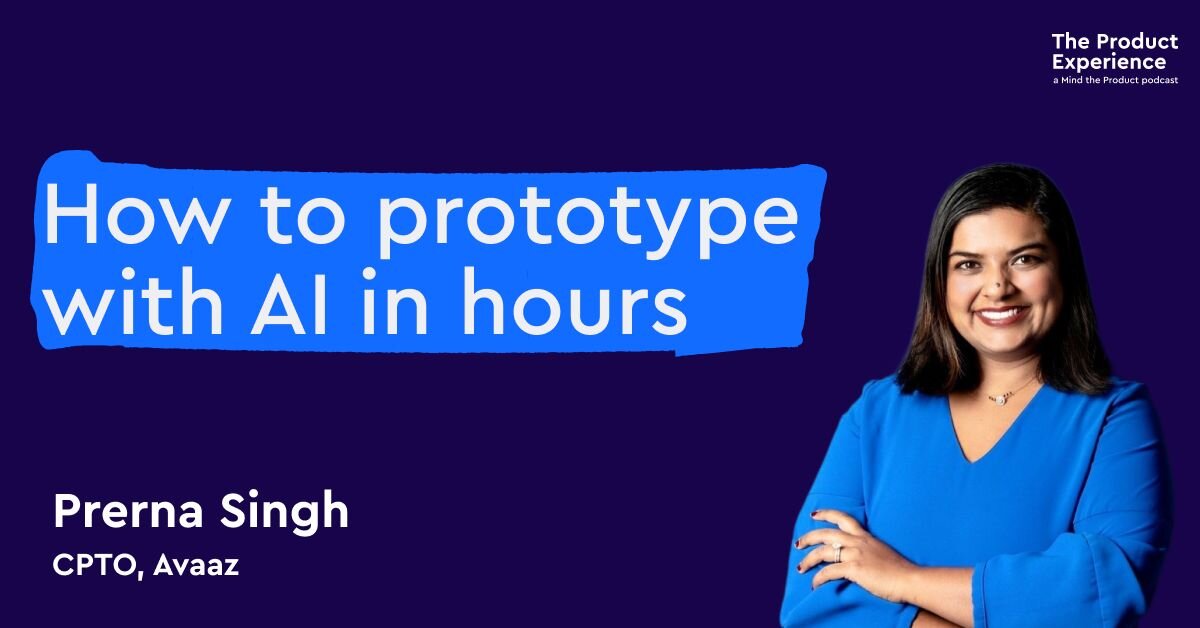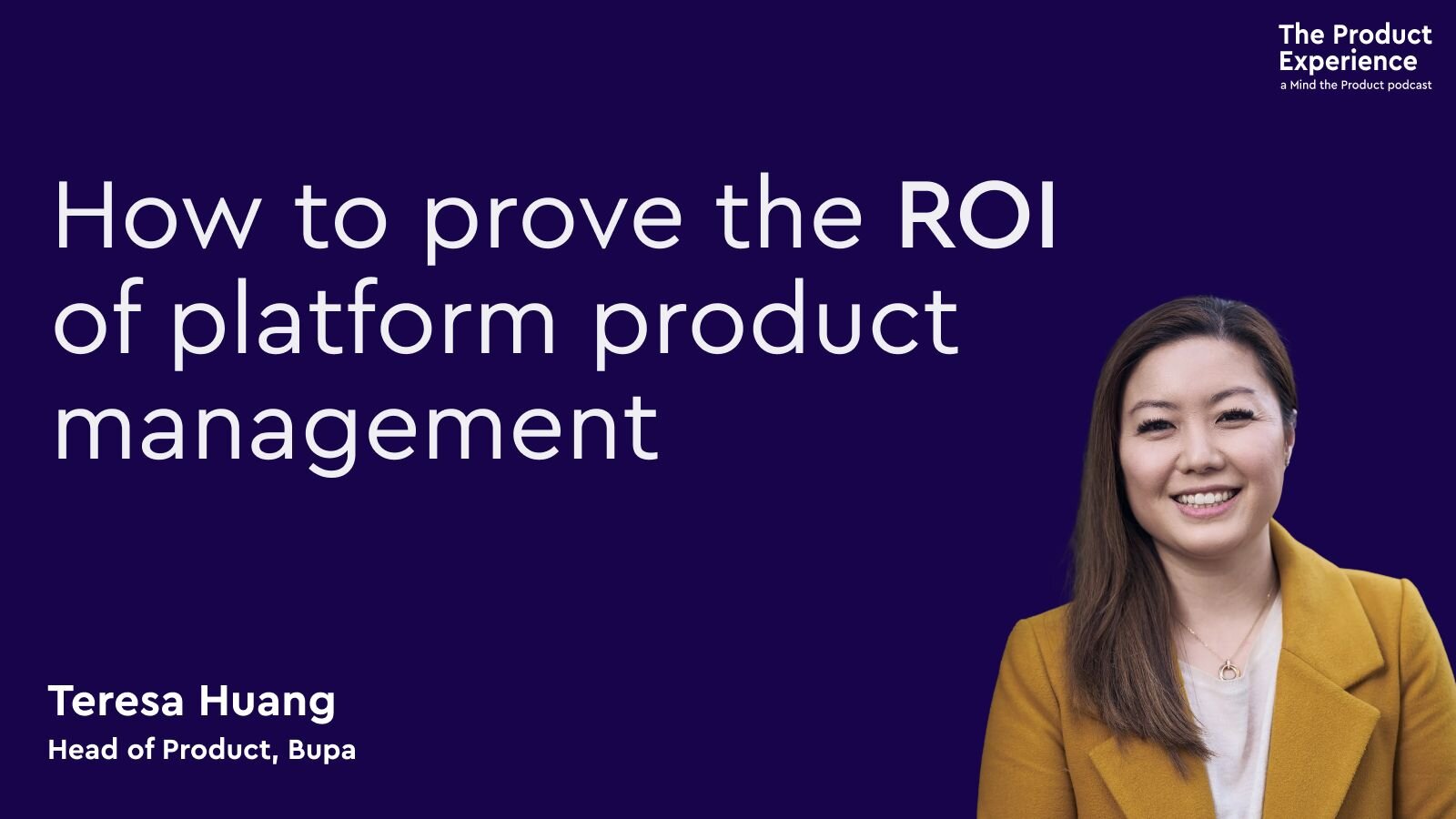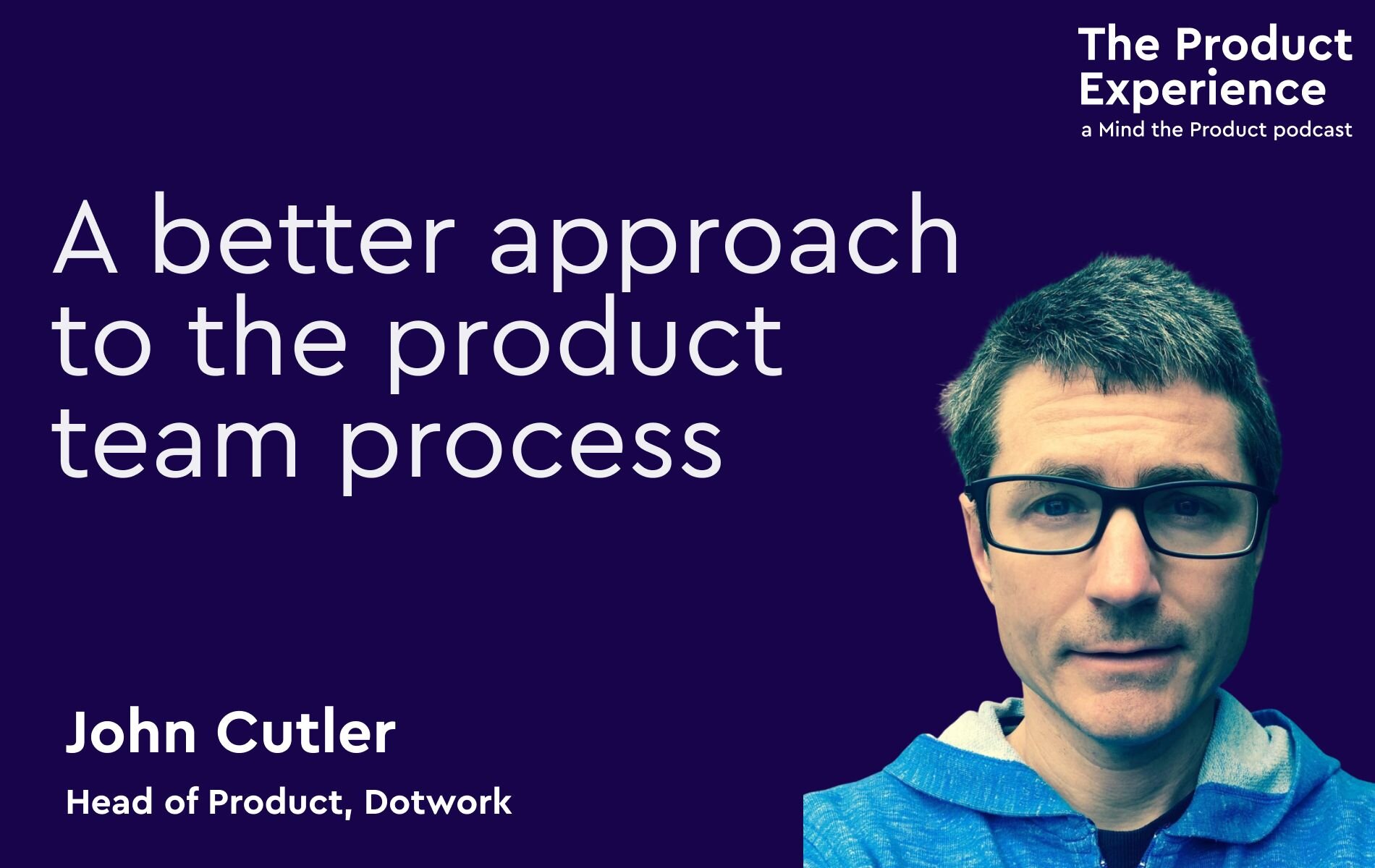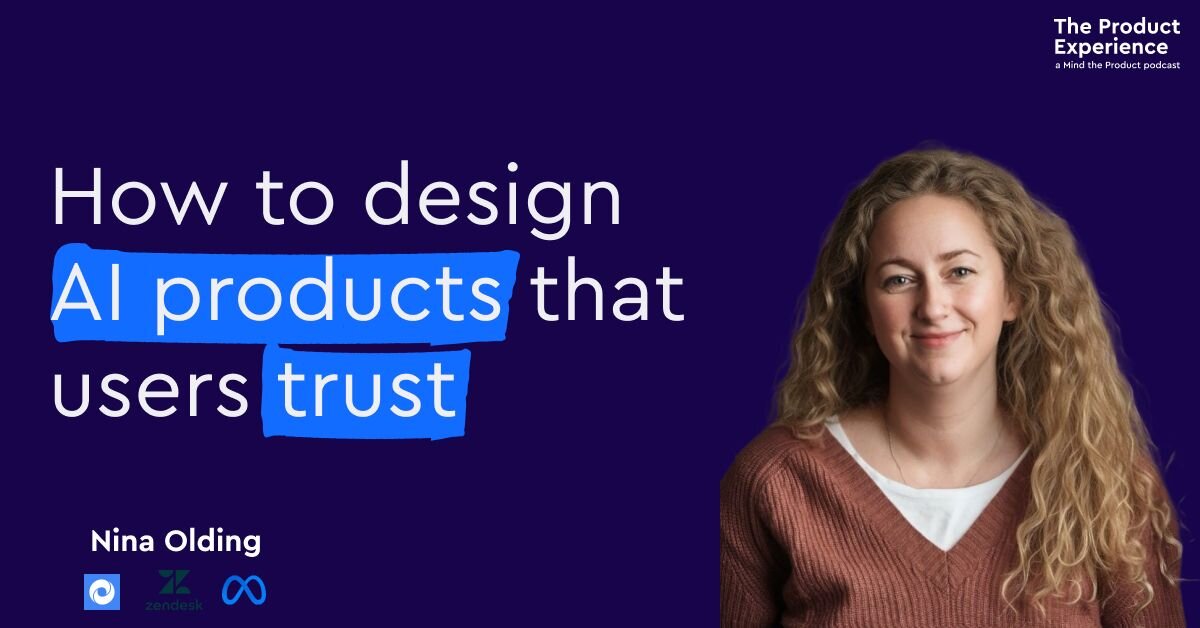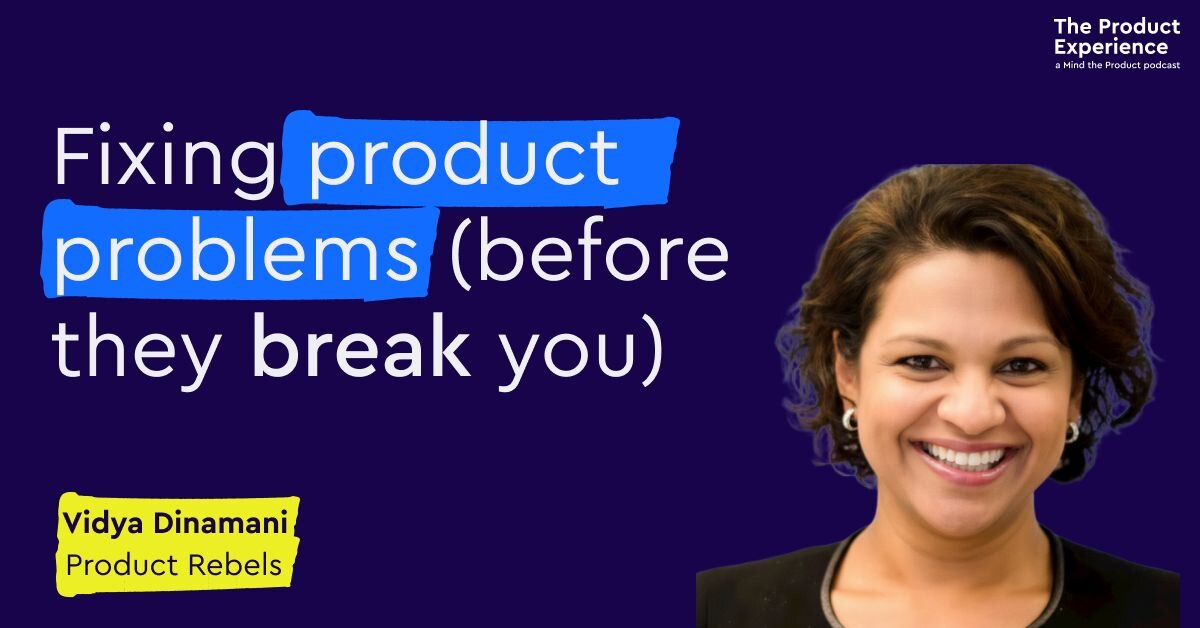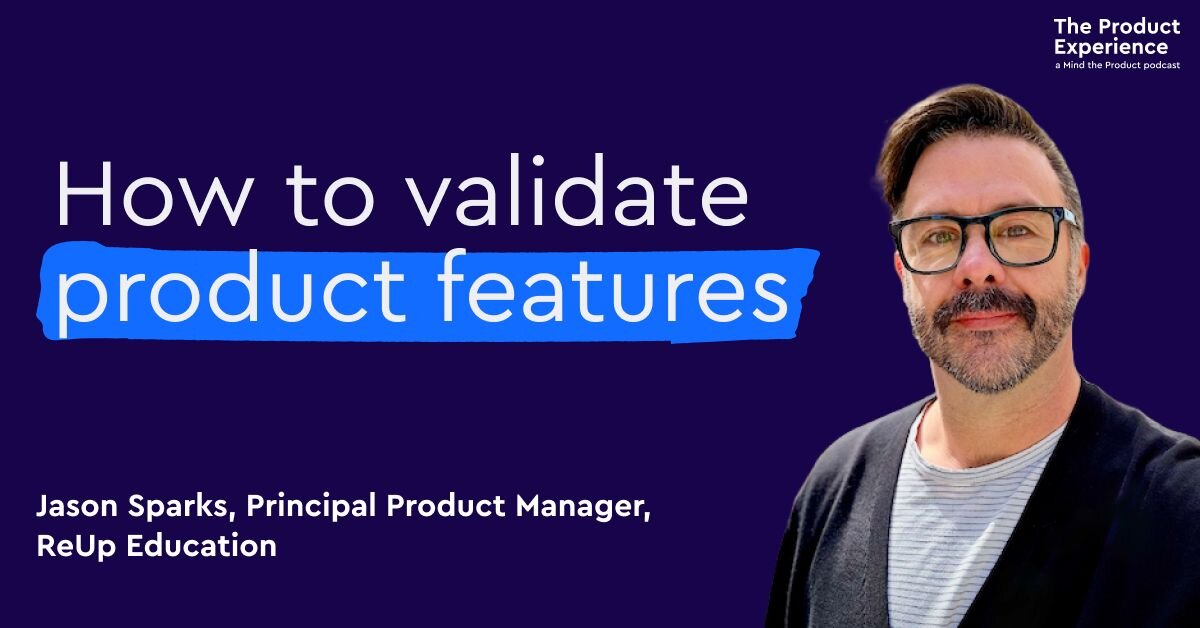In this episode, we cover:
Featured Links: Follow Mel on LinkedIn | Mel's website | Condé Nast | Watch the full Met Gala 2023 at Vogue
Our brand new case study series, Leading product teams through change, we explore the stories of five product leaders who have effectively navigated change in their current and past positions. Each case study unveils crucial lessons and shares the principles you need to embrace in order to tackle challenges in your role as a product leader. Download now.
Episode transcript
Randy Silver:
You know, Lily, it's a real shame that this episode is coming out in October.
Lily Smith:
Is it because there aren't any ghouls or pumpkins featured?
Randy Silver:
Um, no, there is that, but I was going to go in a completely different direction. You know that the biggest issue of Vogue magazine every year is the September issue and, given what we're chatting about today, it just seems likely missed our mark by a few weeks.
Lily Smith:
Oh okay, Are we chatting about what my new winter wardrobe is going to look like? Spoiler alert it will look just like last year's winter wardrobe, apart from maybe a bit more shabby chic.
Randy Silver:
Um, well, you know we would be if you're buying Alexander McQueen, darling. No, we're talking about MGAP the Met Gala as a product, with Mel McVe, kandey Nass. Vp of Consumer Product.
Lily Smith:
We hear all about the unique challenges of building products in this type of business and it's great to hear how Mel transformed the product team and the products Also. Before we start, just a quick reminder that if you're at MTPCon in London on 20th October, you'll be able to catch Randy and I recording a podcast live, talking all about experimentation.
Randy Silver:
And speaking of experiments, they're actually putting me on the big stage too to do a talk, which is, uh, one hell of an experiment. On with the show, the product experience is brought to you by Mind the Product. Every week on the podcast we talk to the best product people from around the globe.
Lily Smith:
Visit MindtheProductcom to catch up on past episodes and discover loads of free resources to help you with your product practice. You can also find more information about Mind, the Product's conferences and their great training opportunities happening around the world and online.
Randy Silver:
Create a free account on the website for a fully personalized experience and to get access to the full library of awesome content and the weekly curated newsletter Mind. The Product also offers free product tank meetups in more than 200 cities. There's probably one near you, mel. Thank you so much for joining us on the podcast today and you're giving us well, you're giving me the chance to ask a question. I've never had the chance to ask a guest before. I want to know who are you wearing?
Mel McVeigh:
My wearing. Wow, I'm actually wearing a local designer.
Randy Silver:
I'm not dressed up tonight.
Mel McVeigh:
So yeah, but normally, if I could, I'd be wearing Alexander McQueen.
Randy Silver:
Good answer. That was my wife's wedding dress was in Alexander McQueen. Okay, there's a reason. I actually asked you that and the reason is obviously that you are someone who Product Director at Condé Nast and you've worked on Met Gala and things like that before. But for anyone who doesn't know you already, can you just give us a quick intro? How did you get into product right now and what do you actually do at Condé?
Mel McVeigh:
Yeah, cool, and thank you for having me on the show. It's actually really exciting to have a chat. So my name is Mel McVie and I'm the VP of Product at Condé Nast. I actually have two key roles within the organization. One is is that on the consumer side, I look after a suite of brands. They're primarily the multi-market brands Vue, gq, condé Nast, traveller and Architects, with Digest are the largest and we operate in 32 markets. I'll always get the numbers wrong, but we have 10 owned and operated that we specifically manage the rest of the licensees. The other part of my job is actually that I run all the commerce capabilities globally from a technical perspective. So anything from our affiliate dropship or anything that we're doing within Storefront sits within my team, and my team comprises a mix of product design and engineers globally. So we have teams in India, munich, new York, london and distributed around the world.
Randy Silver:
And how did you get into the product game in the first place?
Mel McVeigh:
Well, I don't know if there's a traditional path, but I come from a design and creative path. I'm not an engineer or a business kind of manager by background. I actually started my career many moons ago in publishing at Lely Planet in Melbourne, australia, and my first kind of foray into product was through UX and information management. So I started as an information architect actually, but I'm also a creative by trade some of the photographer so my worlds tend to blend between creative and product development Sounds like you're a natural fit for a place like Condé Nast Indeed.
Randy Silver:
So when you first joined there, I'm curious what was the relationship like between editorial and product?
Mel McVeigh:
I've been there for five years and I actually joined when Condé Nast was a variety of separate companies. On the day that I joined we merged the US and the UK or international offices and the technology organization was the first to merge. So in that kind of first couple of years there was a lot of organizational change that not only brought product and editorial closer together but actually the entire company. Right and up until I joined the US company was actually a competing entity to international right Separate businesses, separate P&L, separate strategies. And part of the interesting kind of transition was that as I joined but also as our teams merged, we were two separate product organizations and we came one over time and then globally, across all the markets, was building those relationships within the different editorial and market teams.
Lily Smith:
So as a fellow product person who's worked in a publishing business so I started my tech career at Future Publishing I have a version of like what is like to work with editorial teams and that kind of challenge of working with, you know trying to develop a product and be kind of digital first versus, you know, content ruling and that kind of content is king. What's it like these days in publishing, like how do editorial and product work together and how have you kind of, I guess, tackled that challenge of like the editorial team very much in my day anyway, we're very much like what we say goes we know the customer really well and what we write is the product and kind of the delivery of that as well.
Mel McVeigh:
Yeah, I think that it's a. There's many, many threads to that question, but I think that, like I Mean condays, gone through a transition. We're still a Multimedia business, right, so we're on multiple platforms. We still have the print magazines and we had you know, I mean, when I joined also, every single website was different and on a different platform. So, from a pure product perspective, we did an incredible migration to get everyone on to a unified platform so that we could scale. I think that, like in the context of, say, you know, product and editorial and I hear you, like a lot of my career has been edit is this is what they want, this is what they need. Here's a list of features go build and I think that how we've brought the teams together. There's a lot through trust and partnership, but also through collaboration, and what I mean by that is, you know, we work with some incredible editorial, audience development and creative teams to build Amazing experiences, right, and you, and while the editorial is great, if you can't find it through SEO, if you can't navigate it, if you can't read it because there's too many ads on a page or in fact it has the wrong intent, you know it doesn't actually serve the needs of the customer, and so we've done a lot of work partnering with our editorial teams to Create improved product and services that meet the needs of the customer. But also, on the other side, we've done a lot, in particular this year, of training our product teams. I want it's like to be an editor, so we've done a lot of like training not training programs, but actually like social Events and team building, where we've made our teams editors for the day, right, we've actually kind of gone out and said, right, like you need to go write, publish, commission and publish a story in 24 hours. Right, and the level of learning that is created about the needs and requirements of an editor might sound like he's an article, he's a gallery, but the level of thinking that goes into crafting that story and the assets to that is key, and so a lot of my role also is educating on these nuances that are beyond a wireframe, right? What?
Randy Silver:
is it?
Mel McVeigh:
story. What is that video? What are the cuts and the edits that they're going to do? And storytelling is a really big I mean, it's a fundamental part of what we do. But also, increasingly, you know, we have teams dedicated in product purely looking at storytelling and narrative and partnering with editorial teams to create great online experiences.
Randy Silver:
Mel, you told me earlier about the mecca and how you used that as an example of something where you build bridges and everything. So when you first got there a few years ago, what? What was the digital experience of the mecca like? What would? How did it live in editorial and and in your world?
Mel McVeigh:
So you have to also place it in before, like in the context of the covert right. So when I joined, we were, you know, very soon or working remote globally. And if I kind of go back to even the dates, like the Met Gala, in terms of and I had to kind of pull it up In terms of 2020, we didn't actually have one due to covert and in 2021 we had one in September. So, if you know, the Met Gala it's the largest and biggest fashion event in the world. It's always on the first Monday in May and it effectively is like the Super Bowl or the ox Oscars for the fashion world. And, you know, obviously during covert we couldn't run an event. And then, in the September of 2021, as we were starting to come out of there's kind of restricted environments, we hosted our first Met Gala and in that environment it was also the first time and very ambitiously, because people, you know, often would go around New York and watch it or somehow be involved in a physical Context we chose to live stream it and in that context, building out a whole infrastructure so that we could do our first live stream. And when we started it was just an article how to watch page. How do the watch page? The Met Gala was how you watched the Met Gala and over the last three years we've actually built a kind of whole destination experience. It's before, during, after, globally, across all our markets and brands where you could and our social channels when you can watch that live stream. And so it's three Met Gala's. That makes sense September last year, in this year.
Lily Smith:
And how do you go about as so often in product we talk about and a me testing or Like experimentation but when you've only got three, I guess, events per calendar year, like how do you go about testing or I'm experimenting with those you know to develop those experiences around those events?
Mel McVeigh:
I may go kind of like to the whole A-B testing kind of philosophy. We do experiment, but we experiment in safe places. So when you're working on an event like that, there's a number of ways in terms of we have these, we call them temp polls. We can test on another event. So, whether it's the Oscars or whether it is and look, the Oscars is also huge. But when we launched our live blogging capabilities for the Met, we actually tested it during the Oscars so that we were kind of match fit in real time and we're able to tweak, because the Oscars is about eight weeks before the Met Gala. But in the context of building out the capabilities, we have very clear goals that we need to hit from an audience development perspective. And when I also first joined, one of the pieces and most valuable tips I got from a fellow product director in the New York is that when you work in publishing, 30 to 40 percent of what they do is intuition. Yes, we have data, yes, we have metrics, but a really good editor can kind of sense what we need to do. And part of that philosophy I encourage my teams to do in product right With what is the test, what is the hunch that we can do in a safe space, that we can ideate within these solutions. So, within the context of the first Met Gala, I said we need a hub, right, we need a kind of an environment and destination experience where you can view the history, you can get the red carpet looks, you can kind of go through and build out this experience, while also experimenting with having the live stream everywhere on the website, all tied to the metrics of, you know, audience but also our video views. And that was the first test, right, and I was like, but we do a global, we can go over, and they're like, no, no, no, too risky, we don't know what's going to happen. So we agree to kind of build out, you know, a set of capabilities and experiences, as well as a program plan that was before, during and after. And we call it now maximizing the moment, because the Met Gala isn't just the first Monday and May, it's the build up. If you're on any kind of social, it starts to build up two or three weeks before. Who is going to be wearing what? What is all the history Like this year was Karl Argerfeld we were dropping content two to three weeks before to create that intent, remind people. One of our biggest features has been our countdown clock right, a very small feature that gives people the ability to know how and when it's going to be on. It drives registration. It drives intent so that when you get to the night of, you've actually got an engaged audience, that you're not trying to kind of get through SEO or any other means.
Randy Silver:
Mel, you're talking about the countdown clock and global streaming and how you worked there that first year. How did you, how did you pitch it? How did it work? You'd gone from something very basic, just an informational page of how to watch the Gala. How did you engage your, your partners and editorial, your stakeholders? How did you convince them to go from that to to where you are today?
Mel McVeigh:
So we set up a program team. So we had incredible what we do, incredible partners across consumer revenue, editorial and audience development and entertainment to set up a program. We actually we have and we still do. We had a weekly meeting that talks through all the kind of issues and ideas. The actual kind of simple way you know this is from the artist world is you can't change what you can't see. So we mocked it up as a prototype. We said what if we could take some of our existing features and create you this destination experience that we can test against? Right, we're not going to jeopardize this single URL this is where you watch it but we're going to wrap around it Additional features. So that became the Met Gala Hub. Within that we talked about experimenting with before, during and after. So the kind of content that we would drop and lead up to. And then if the on the context of that, also in terms of how we were driving a different audience as to newsletters, and so it was really off of design UX workshop, we had a workshop with editors. That's where the countdown clock we had voting on our red cup of gallery, like really small features. That actually had a massive impact in driving loyalty and audience for our users. So it was a couple of small features and a hub, no more or no less, and then we went from there.
Randy Silver:
Was? Did you have trouble getting the editors in a room to agree to to let you do this at first, or was it where you met with open arms originally?
Mel McVeigh:
We met with open arms in the context of like, we have really good partnership with audience development. So in the context of we believe, you know, based on our shared goals, that if we have this experience it's going to help us meet our goals. What was also the benefit? If you're meeting in a program plan context and you're hearing about content they're producing, we were able to say, oh, you know, there's a fee, because often actually within editorial teams they are digital first but they might not know the full mix of features that we have and my job, and also because I work across multiple brands and sometimes not all our sites are in sync, but they are. I know where features and stuff have worked elsewhere and I'm like did you know that Vanity Fair has done it this way? Did you know that you know like? Architectural Digest has done another? So we can borrow learnings from other parts of the business and then bring them to the experience and then from that it's just you know they have, they are clear, the red carpet galleries are most viewed kind of article and experience. So, as long as we hit the goals of what they wanted voting speed and time spent then we were able to ideate off the back of that and it was small, it wasn't a big bet, right, it was just a little bit. It was the hunch because we didn't have data. We didn't have anything previous, but something that was additive to the experience, not challenging, if that makes sense.
Randy Silver:
Hey Lily, you're a senior product leader.
Lily Smith:
Why yes, randy, how kind of you to notice I may have led just a few product teams in my time.
Randy Silver:
So you know how important it is to hear stories and get insights from other product leaders facing similar challenges.
Lily Smith:
Oh my golly gosh. Super important and, to be honest, not so easy to find that these days. So much has changed in the past couple of years.
Randy Silver:
Oh God, I hear you. Well, the reason I bring it up is because Mind the Product have just released a series of brand new case studies from senior product leaders, all without leading product teams through change.
Lily Smith:
Tell me more.
Randy Silver:
Well, in this brand new and totally free resource, mind the Product, explore the stories of five product leaders who have effectively navigated change in their current and past positions, unveiling crucial lessons and sharing the principles you need to embrace in order to tackle challenges in your role as a product leader.
Lily Smith:
Very interesting. So who are these product leaders?
Randy Silver:
Well, they've got some goodies. There's Dave Walsh, who is the former CPTO at Zupa, kate Lido, who's an amazing product leadership executive coach, and Navya Rahani Gupta, cpo at Peak, for starters, and there's even a bonus tip section on how to look after yourself as a product leader and oodles more further reading suggestions.
Lily Smith:
This sounds amazing. How do I get my hands on it?
Randy Silver:
Oh, that's the easy part Just sign up at mindtheproductcom. Leading through change.
Lily Smith:
I think it's really interesting because again sort of like remembering back to my experience of editors and working with editorial teams, like they were very opinionated around what the customer wanted, but they were often also very right, and so being able to listen to that experience and that knowledge is like a key aspect of being a product manager. You mentioned as well earlier sort of like that moving from an article to a narrative and what that meant for you and the product team. Tell us more about kind of what that looked like sort of before, during and after your development work.
Mel McVeigh:
Yeah. So, like each year, we sit as a team and talk about like the overall narrative and the kind of interesting thing is we don't actually often know what the content is until the last minute because there's a very small group within content editorial because of the nature of the Met Gala. That keeps it quite tight. But we do know the formats they're going to work with. So, for example, if I go back to the original Met Gala that I worked on, we actually had our live stream in landscape format, right, which doesn't really work on mobile when the majority of our audience is like 80% of our audiences on mobile. So the really interesting thing about that kind of narrative is product can build features, but also the production team needs to know the formats that they're producing for. So while at that time we didn't actually have mobile cut kind of capabilities, off the back of the success of the Met in 21 and then also looking into like literally the moment the Met sort of finishes we're already talking about the next year it became a bit of a production timeline of how we were going to create that content purely from a technical level, right. So we built, you know mobile capabilities so that you can do vertical streaming. We built capabilities that were very easy to do cuts and do social cuts. You know, in basically in real time, because people often, you know, don't really, I mean this is shot and covered and produced and edited in real time, and so it's not just the live stream, it's all the social cuts, it's all the content that happens before, during and after, and we have teams basically producing that, knowing effectively the slots that they have on the page, right. So that intersection of if we've created a layout, there is actually a narrative flow from top to bottom you get the live stream. If you then look at a carousel, you'll have all the you know cuts to all the different celebrities, you'll have the red cup at looks, and so everything is kind of architected for a moment and to maximizing it at all times. And we can do that because, even though we don't necessarily need to know which star, which content, what are they wearing, we know how they're constructing the production. Because if you're working with an entertainment, the feed, the sizing, the cuts, even to the point where it sounds small, like if you're doing a vertical cut, how you film someone for both formats during a live format really actually matters, right. So it goes down to a level of finesse where product actually has to be in real partnership with our video entertainment and our editorial teams to bring that to life. Then we know to maximize the moment through Auddev when our audience is going to come. So we actually have two parts of the Met Gala because it's shown really late or it's not shown as live really late in the US. So we get two bumps of audience. One is night off, but in the UK and Europe it's like midnight right 1am. So the majority of people in Europe in the UK don't watch it till the morning. So we also hold back content based on the different audiences to keep generating interest, intent, pr discussion, and then also we also don't know what's going to land. Like we know which stars are often going to work, but ultimately you also don't know. You'll get some outliers because we don't know what they're wearing. And then all of a sudden you can cut content based on what is also being talked about, like in social or in other channels. So it's a really lovely iterative process and our job is just to optimize Right. We have this kind of destination experience that also then allows us to take it to other brands.
Lily Smith:
And during that period, during the actual event itself, is a lot of what you do in product about enabling the flexibility or the reactivity of the editorial teams and the content teams, or do you literally have the product team on call as well to react to whether a particular feature is like people are responding really well to it, and then you're changing the experience for the customer.
Mel McVeigh:
So we're actually effectively on code freeze, so we are production ready weeks before we know exactly what is happening. The actual stuff during the actual live event is about load audience. You know all the real technical. I'm making sure that the stream doesn't glitch. So we're basically there to make sure the website doesn't fall down, which thankfully it never has. Nor would it, because we have tested it road tested it like it's tested for weeks. But our entire organization basically goes into code freeze so that no nothing else within the system could impact that moment.
Randy Silver:
Well, this sounds incredibly impressive, but Is this something that you reuse across Condomast? Is this a product, that is, are these capabilities that you're using from a product perspective, or is it a one-off product, specifically, that's used once a year for the McCalla and the Oscars?
Mel McVeigh:
No, we're going to now, well, to iteratively build over time the kind of capabilities we use for Vogue World, and that's even more impressive because we're able to the first one, and that is a live TV show edited and cut in real time over half an hour, with a whole range of other kind of mechanics that happen in that live TV context, and we have we've been able to scale it out. So all one of the nice things about the Met is that it's a hard date and so, from a say, roadmap perspective, we work towards that hard date first of May, but then we can test, like I said, with the Oscars, but then we can roll it out. So a lot of these capabilities are now used for GQ's man or the glamour's woman or the Manatee Fair Oscars and our job within product. Because we have this brand and platform kind of capabilities mindset. We scale the technologies so they're not actually bespoke. What they're seeing is that it might have different features. So if a brand might not have the live stream but they have all the other elements, then our kind of temp poll narrative kind of works from that.
Lily Smith:
And how do you measure success? You've mentioned a few times about driving engagement and driving conversation, but yeah, how are you measuring success for these products?
Mel McVeigh:
One of the nice things about these programs is that we have shared metrics. That's not always easy in a publishing business, right, you know, editorial might have one metric, product might have another. You're in commerce, you have another. But within our program plan we come under a shared goals mindset. So we know the audience, we know the video views that we're expecting, you know, we know, no, we know we're set targets, right, whether it's commercial commerce, subscriptions, and it does vary per temp poll, but ultimately we're running under a shared goals framework. That way we can assess whether or not the work, the priority, because the other good thing, bad thing is that you're on a hard date so sometimes you can't get everything done. So it's a really, really fantastic way to prioritize with the business about must have features, must have capabilities, what can wait, and then we kind of go from there. But it is your traditional publishing, so it's audience, time spent. It might be subscriptions, right, newsletters, signups, whatever it is, and then we align around that to make sure our flows, our components, our signups, like I said before, you know, one of they might sound small but the, you know, the biggest features that we've been able to introduce is the countdown clock, which you know effectively. You know is a ticker and our red gallery voting, and that's now used across many of our brands and for all sorts of things. We use that countdown clock for the prime day like it doesn't have to be for a temp poll right. We've been able to adapt these capabilities to run for different use cases.
Randy Silver:
I'm doing some work with an editorial team now at a very different kind of publication and it's interesting because I'm trying to get them to think, oh, we'll do a bit more like like product people in terms of they've been very print oriented in the past and trying to get them to think digitally and experiment and things like that. How has it been? What's it like getting the product managers and the editors and the dev teams in the room together? Do you find that the editors are starting to think in the same terms as the product teams?
Mel McVeigh:
Yeah, they do, but I say it goes both ways, right. I would always encourage a product you know. If you're going to work in publishing a media, you need to know your product, right. And you would be surprised that how many sort of product managers don't know their product? So if you're going to work with an editor, you need to know what they do, right? So I think that it's kind of a mix, but you know the benefit. But this would be in any kind of organization share goals make for shared teams, right? So if you have a shared goal, then people work to you know, to problem solve. And we have different flavors, all our brands have their own personalities, but I, you know, one of the beauties of working con day over the last years is the work that we have done to build, you know, a product organization and I'm only one part of it, right, it's much bigger and grander than me that has really started to kind of move the needle and partner in different ways, whether it's our video teams building out these capabilities within our entertainment business and audio, and then we kind of borrow not borrow, but we partner with them. Also, like you know, we're live stream. I'll be working with one of the other product orgs at the same time. And then, you know, a different project I'm working, you know, on my commerce team, right? Or my commerce team is working with the subscriptions team. So we're highly collaborative, right based on the needs and the plans for the business.
Lily Smith:
And on the, I guess on the commerce side of things, is that sort of like one of the revenue streams for the, for the business, and how have you seen like the approach to that change over the years, with you know people getting more used to paywalls and things like that, and has the strategy kind of evolved over the years for you guys?
Mel McVeigh:
Yeah, definitely has. And this is where I'll have to say the relationship has taken a little bit longer to build. I mean, my background is a mixture of pure play e-com, fast moving, you know, private equity funded kind of companies and then you go to publishing and it's a very different pace. It's also a very different type of product management. All right, commerce product management is not the same as editorial product management. So we, and also the way that we and we're an affiliate business, right, so commerce in that in our context, is primarily our affiliate business and our subscriptions is around our paywalls and you know how we monetize in that kind of context. And it has been a learning and a journey. But the beauty, I think, is I mean my team I came in and built the first product commerce product teams at Condonast, but bringing in some subject matter experts, you know, from the commerce industry and our partners now in consumer revenue we've really been able to unlock. But a lot of that is actually really educational. You're teaching a completely different mindset in terms of commissioning, merchandising, you know, and producing highly editorial content but with a commerce mindset.
Lily Smith:
And what do you think other kind of verticals or markets can learn from publishing the art of the story.
Mel McVeigh:
Hmm, the thing that is is that, like, you can do all the SEO and all dev research in the world, but if an editor gets on a story that just goes wild right, like I've never seen it, not not seen anything like it, but there is a beauty and editorial voice and we can talk AI and automation and we can, you know, publish these things immediately. But ultimately, what we want is authority and I think, within that context too, it's then understanding where that authority comes from, and it really does come from a point of view. It comes from a passion and it comes from kind of understanding, kind of inherently, like you wouldn't work for Vogue and editorial if you don't, if you're not Vogue right, and you wouldn't work for Traveller if you're not into travel in the editorial space. Like it's part of your DNA and I think that, like, if you're going to build good products that are in a creative space including, like probably, tv and sport, you've got to be passionate about that product and how that audience engages with that product, to then kind of build features right or build experiences, and I do I've been a lot of an interviewer, a lot of product managers that don't get that nuance right. Which is product is product. Great, you can have a framework, but if you're really to add value, you've got to really live and breathe the product that you're working on.
Randy Silver:
Mel, you've talked a lot about how well this has gone over the years. What's been the biggest challenge?
Mel McVeigh:
Challenge and opportunities. Bringing a global company together. I see that as a really fun challenge. One of the proudest parts is working for a global company, but you are dealing with time zones, you're dealing with different cultures. It's just that that has been an education, and I think on the other side it has been about prioritization. You know we do a lot and so, to kind of keep a level of sanity, it's about kind of guiding people and protecting the teams on what is the highest value and the highest impact. Right, we don't need to do everything. We just need to do focus on the customer but also focus on the value that we're providing.
Randy Silver:
I think that's a great way to close this. Thank you so much for taking the time out. This isn't fantastic.
Mel McVeigh:
Thank you for inviting me.
Lily Smith:
The product experience is the first. And the best Podcast from Mind the Product. Our hosts are me, Lily Smith.
Randy Silver:
And me, Randy Silver.
Lily Smith:
Luan Pratt is our producer and Luke Smith is our editor.
Randy Silver:
Our theme music is from Hamburg based band POW. That's PAU. Thanks to Arnie Kittler, who curates both product tank and MTP Engage in Hamburg and who also plays bass in the band, for letting us use their music. You can connect with your local product community via product tank Regular free meetups in over 200 cities worldwide.
Lily Smith:
If there's not one near you, maybe you should think about starting one. To find out more, go to mindtheproductcom. Forward slash product tank.
